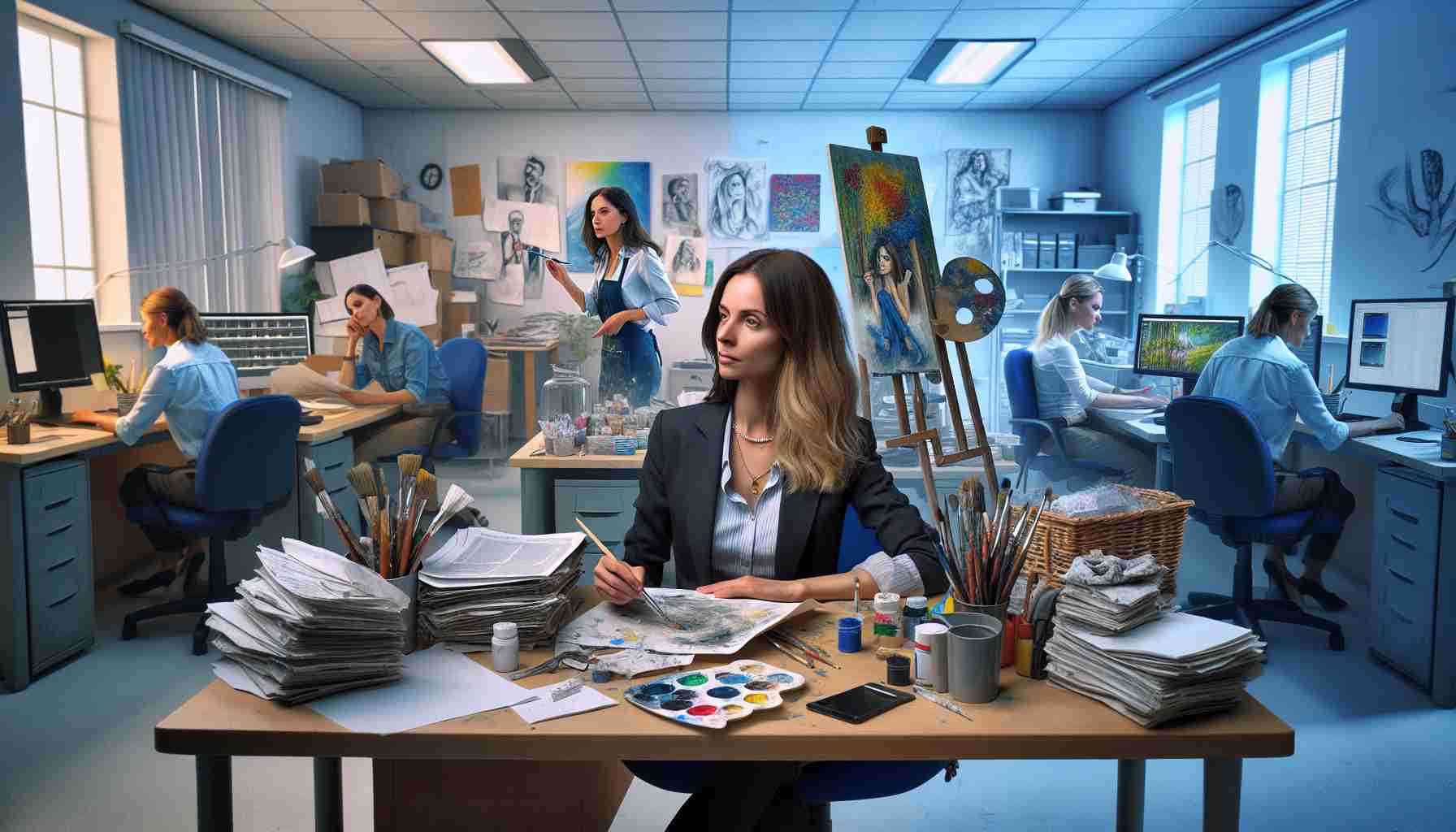Summary: This article explores the journey of transitioning from being an office worker to becoming a professional artist. It discusses the challenges, benefits, and steps one can take to make this career shift.
As many individuals desire a career that aligns with their passions and creative abilities, pursuing a profession as an artist can be an exciting and fulfilling choice. However, for those who have been working in an office job, the transition may initially appear daunting. This article aims to provide guidance and valuable insights for individuals seeking to transition from an office worker to a professional artist.
Challenges Faced
One of the major challenges in transitioning from an office worker to a professional artist is the mindset shift. Many office jobs prioritize routine, structure, and stability, while the path of an artist often requires embracing uncertainty and taking risks. Adjusting to a more fluid work environment, where income may not always be consistent, can be a considerable challenge for those accustomed to the stability that a corporate job provides. Additionally, acquiring the necessary artistic skills and building a portfolio may require time and effort.
Benefits of Pursuing a Career as an Artist
Despite the challenges, there are numerous benefits to pursuing a career as an artist. Unlike an office job that may feel monotonous, working as an artist allows for exploration and creative expression. The possibility of creating unique and meaningful pieces of art, and the opportunity to impact and inspire others, can bring immense fulfillment. Furthermore, the ability to set your own schedule and work independently provides a sense of freedom and autonomy that is often appealing to those looking to escape the constraints of a traditional office environment.
Steps to Transition from Office Worker to Professional Artist
1. Self-Reflection: Evaluate your passion and commitment to art. Artistic pursuits often require dedication and perseverance, so it is essential to assess your level of dedication before making the transition.
2. Skill Development: Invest time in honing your artistic skills. Take art classes, participate in workshops, and practice regularly to improve your craft. Building a strong foundation is crucial for establishing yourself as a professional artist.
3. Build a Portfolio: Compile a collection of your best artwork to showcase your talent and style. A diverse and well-curated portfolio can greatly enhance your chances of being recognized and getting commissioned for projects.
4. Network: Connect with other artists, attend art exhibitions and events, and join art groups to expand your network. Building relationships within the art community can open up opportunities, collaborations, and mentorship.
5. Business Savvy: Cultivate an understanding of the business side of being an artist. Learn about pricing, marketing, and selling your artwork. Developing entrepreneurial skills will help you navigate the professional art world.
6. Market Yourself: Create an online presence through a website or social media platforms to showcase your work and attract potential clients. Utilize various marketing strategies, such as participating in art fairs or engaging with local galleries, to promote your art.
7. Transition Strategically: Consider transitioning gradually from your office job to a career in art. This can help mitigate financial risks and allow for a smoother transition.
Frequently Asked Questions (FAQ)
Q: Can anyone transition from an office job to becoming a professional artist?
A: Yes, with dedication, a willingness to learn, and a passion for art, anyone can work towards becoming a professional artist. It may require time, effort, and a strategic plan for transitioning.
Q: Is it necessary to have a degree in fine arts to become a professional artist?
A: While a formal education in fine arts can provide a solid foundation, it is not a prerequisite for becoming a professional artist. Many successful artists have honed their skills through self-study, workshops, and real-world experience.
Q: How long does it take to establish oneself as a professional artist?
A: The timeline for establishing yourself as a professional artist varies for each individual. It depends on factors such as the time dedicated to skill development, building a portfolio, networking, and marketing efforts. Patience and persistence are key.
Q: Is it possible to make a livable income as a professional artist?
A: Yes, it is possible to make a livable income as a professional artist. However, it may require multiple income streams, such as commissions, sales, teaching art classes, or licensing your artwork.
Sources:
– www.artistsnetwork.com
– www.artbusiness.com
– www.artistsandillustrators.co.uk
The source of the article is from the blog kewauneecomet.com
